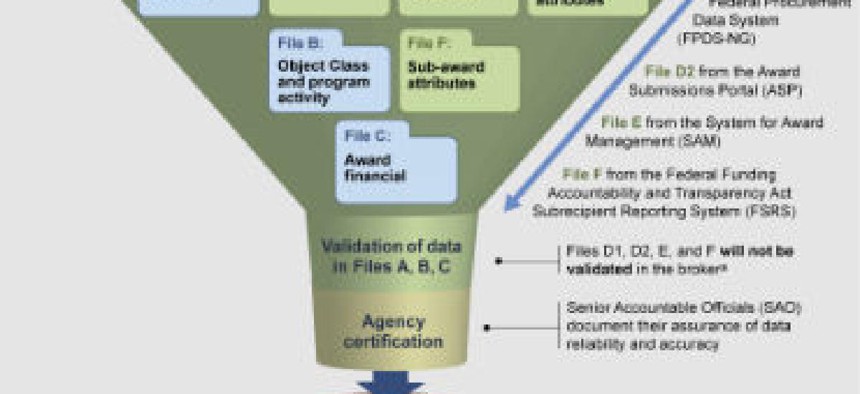Delays in Data Act standards could complicate compliance

A GAO report says the data transparency law holds considerable promise for ensuring that government money is well spent, but data schema and tools for agencies are not yet where they need to be.

In an Aug. 3 report to lawmakers, the Government Accountability Office said the Digital Accountability and Transparency Act holds considerable promise for ensuring that government money is well spent. But GAO warned that the Treasury Department's delay in releasing a critical data schema could complicate agencies' efforts to meet deadlines for complying with the law.
Treasury and the Office of Management and Budget have provided guidance that "establishes the technical format and supporting systems to facilitate agency reporting," the report states. But with agency spending data due in May 2017, "there is limited time to complete technical changes and adjustments to facilitate effective implementation."
At issue are the Data Act broker and the Data Act Information Model Schema. The schema provides technical guidance for standardizing the required data submissions, while the broker system "will apply a series of format and formula checks to the budget and financial data elements submitted by the agencies to ensure that the data are in the required standard format and correctly calculated," GAO's report states.
Treasury released Version 1.0 of the schema on April 29 -- four months later than planned. "Federal [enterprise resource planning] vendors such as Oracle told us they waited to start developing key software patches until a stable version of the schema was released," the report states. Those patches "are needed by some agencies to facilitate agency data submissions from their existing financial management systems."
The patches might not be available until February 2017, GAO said, and it "is unclear the extent to which agencies will need to test and...customize these patches before they submit data to Treasury."
Development of the broker system appears to be less problematic. A beta version was released in June, and the "full production" version is expected this fall. That tool "includes a set of validation rules to help ensure that data submitted to the Treasury data store are in the standard format established by OMB and Treasury for each data element, including field length and data type," GAO's report states. The production version will also "include additional functionality for extracting data from existing award systems."
GAO made no specific recommendations in the report but promised lawmakers the agency would continue to monitor the issue as part of its ongoing work.
NEXT STORY: A 'money-making' CIO job


